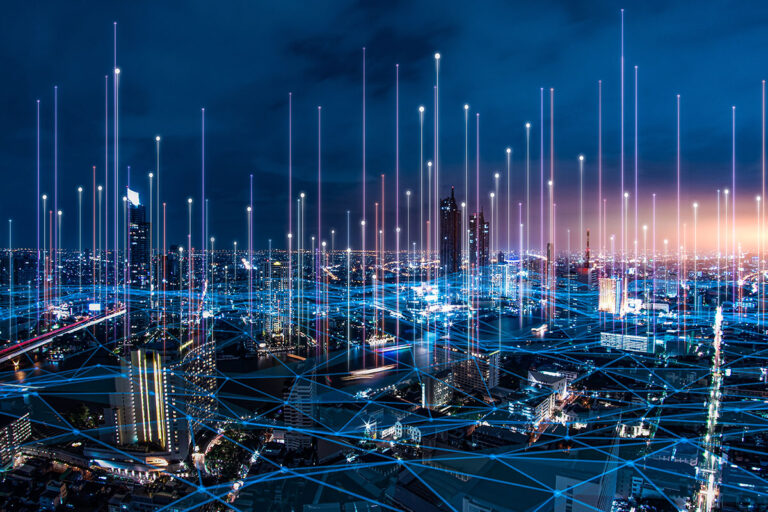Telenor has played an active role in the development of every generation of mobile communications technology. 5G, the fifth generation technology, is currently being introduced in earnest. On the other hand, we are also proactively working on research and development of the future technology “6G”, which is expected to be put into practical use from around 2030. What is 6G? Visions and ideas for new technologies are still in the research phase, but a clearer path forward will emerge in the coming years.
Key technology beliefs about 6G
Telenor and its partners are researching and testing several technologies that will be important in 6G to meet the various needs of society and customers. We believe that 6G will enhance communications beyond the performance of her 5G. Some of the new features are:
-
Advanced solutions for parallelly linking devices to networks increase customer access to data-intensive capabilities. This may include drone or satellite links and the possibility of seamless roaming between public and private networks.
-
Improvements in network computing allow you to offload required computing resources from user devices, increasing overall efficiency.
-
Better location and positioning services will improve the ability to track and control equipment in factories, agriculture, and more.
-
Improved signal quality allows you to modify your wireless signal to improve coverage and stability, especially indoors and in urban areas.
-
More advanced automation capabilities enable companies like Telenor to improve network resource utilization, ensure network reconfiguration flexibility, reduce energy consumption, and improve quality of service to customers. .
The first phase of 6G is expected to see targeted network solutions used for private mobile networks such as emergency responders and defense, rather than as an immediate replacement for 5G public networks.
What is driving the 6G vision?
While we don’t yet know the details of what the 6G solutions will be or how they will evolve, we are clear about the forces driving the 6G vision. Key to the ongoing work on 6G is understanding how the 6G vision adds sustainability to ambitious technology goals. It is no longer enough to enable digitalization and respond to the diverse needs of customers and businesses. 6G gives us the opportunity to build networks that live up to inclusivity, sustainability, and trust. His 6G vision, based on alignment with broader societal goals on climate, information security and privacy, and a sustainable internet, is easy to propose, difficult to realize, and difficult to measure. Yet, in every research project, we identify values that need to be addressed. For example, an important value may be the protection of individuals from harm, which may be measured by the reduction of injuries in public protection or disaster relief operations. Safe and easy use of augmented reality and virtual reality communication tools could be a way to realize that value.
Our research projects take a deep dive into customer cases to understand the problems and how next-generation network and cloud technologies can provide solutions. Therefore, identify needs and business opportunities and measure technology performance. We now need to identify environmental and social issues, stakeholders such as policy makers and the public, provide solutions, and suggest ways in which technology can alleviate concerns about, for example, health, safety, and privacy. there is. Importantly, as part of 6G validation, there is a need to identify any potential negative environmental, social, and economic impacts that the technology may have. To understand and validate such effects, we analyze specific use cases, such as the use of holographic imaging.
6G research by Telenor
At Telenor, we collaborate with European academic and industry communities to share methodologies and insights related to 6G. Telenor R&I is working on use case development in several projects, including:
-
Civil protection and disaster relief, industry, health, forestry, and media in the IMAGINE-B5G project
-
Media and smart village in FIDAL project
-
Demonstrate new user needs and address sustainability goals while designing new 6G architectures with Hexa-X-ii
IMAGINE-B5G and FIDAL are both projects that provide large-scale experimental testing platforms across Europe for advanced use cases. Telenor R&I plays a key role in the experimental platform i-CORA.net and will host around 15 projects approved for funding and testing between 2023 and 2025. Telenor R&I is also working with Norwegian stakeholders to understand their needs and customize experimental test instances. Hexa-X-ii embarks on the design of his future 6G architecture with social, environmental and economic sustainability as key goals.
Telenor is collaborating with the European Union’s Public-Private Partnership on Smart Networks and Services (SNS JU). SNS JU has two main missions: promoting European technological sovereignty in 6G and accelerating the adoption of 5G in Europe, in line with climate, information security, ethics and privacy, and sustainable internet goals. and funds research and innovation projects in smart networks and services.
Our 6G project activities and community contributions place Telenor at the forefront of meeting society’s expectations that sustainability and business opportunities go hand in hand.
See below for more information.
Smart Network and Services Joint Venture (SNS JU)
HexaX-II
Fidal
Imagine-B5G


